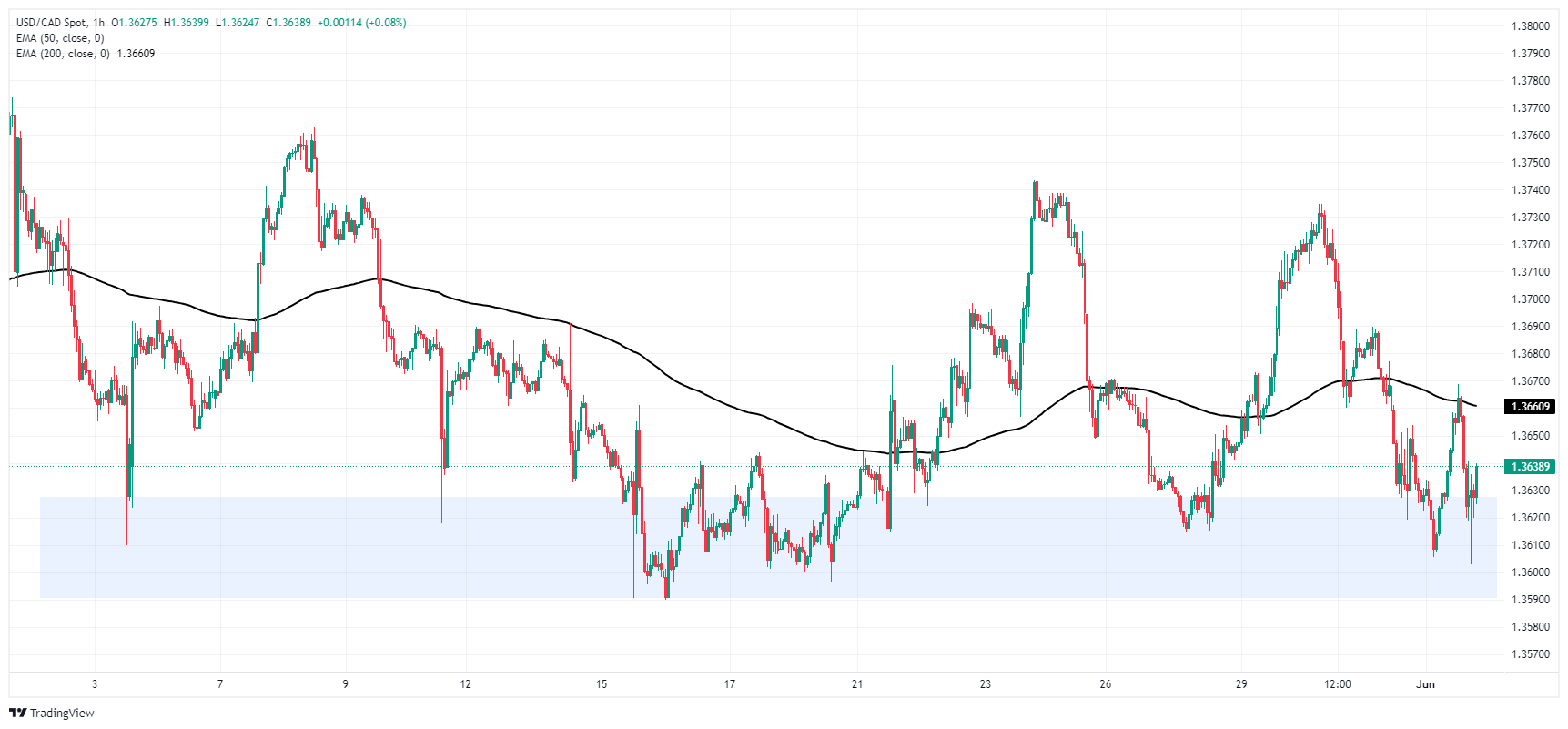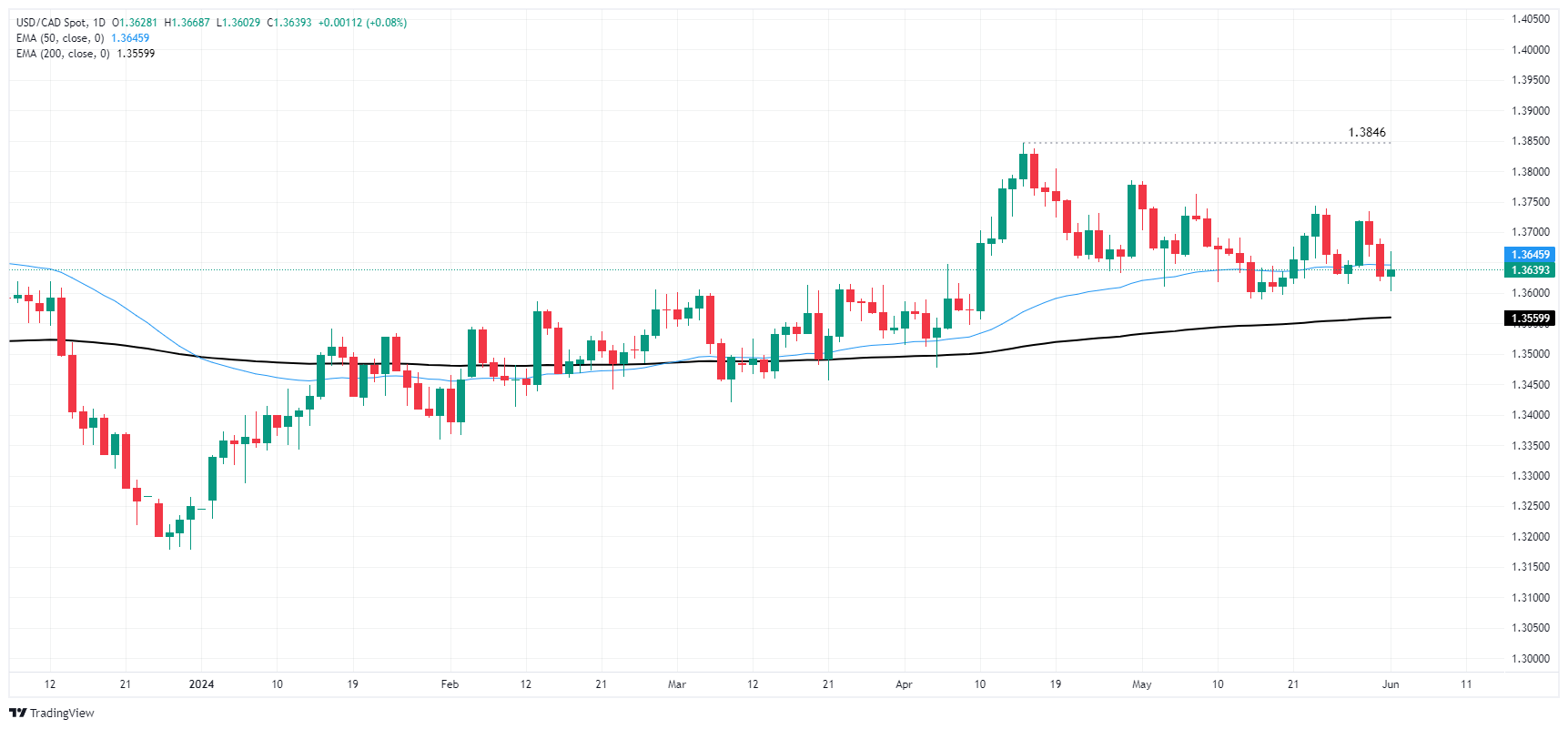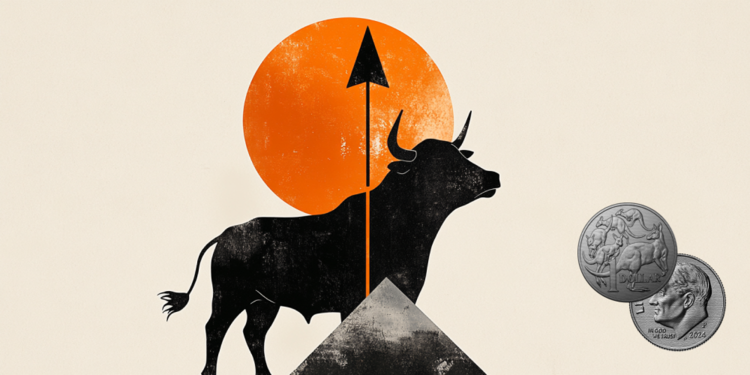- Markets begin the NFP week pricing in a first Fed rate cut in November.
- Canada shows an unexpected drop in manufacturing PMI data.
- CAD traders prepare for BoC's midweek rate decision as Friday's NFP numbers loom.
The Canadian Dollar (CAD) is broadly lower on Monday after S&P Global Canada manufacturing Purchasing Managers' Index (PMI) numbers for May disappointed expectations. A similar result in the US ISM manufacturing PMIs has left the Canadian Dollar and the US Dollar (USD) fighting for second place.
Canada has spent 13 months with manufacturing PMI surveys below the key 50.0 level, as industry leaders continue to grapple with a declining Canadian economy. CAD traders will also be keeping an eye on the Bank of Canada's (BoC) rate decision on Wednesday as markets increasingly lean towards hopes of a rate cut by the Canadian central bank. According to a recent Reuters poll, 22 of 29 economists surveyed expect a 25 basis point rate cut by the BoC on June 5.
Daily Market Summary: Canadian Dollar Weaken, But US Dollar Weaken Faster
- Canada's S&P Global Manufacturing PMI for May fell to 49.3 from 49.4, missing the forecast increase to 50.2.
- Markets largely ignored the US S&P Global PMI to focus on the US ISM Manufacturing PMI, which fell to 48.7 from 49.2 in May, below the expected rise to 49.6.
- Wednesday looms with the BoC's latest rate decision, where markets anticipate a quarter-point cut.
- Wednesday also brings the ADP employment change for May, a common (if volatile) preview of Friday's US nonfarm payrolls (NFP) report.
- Canada's jobs numbers due Friday will be overshadowed by market reactions to the US NFP.
Price of the Canadian Dollar Today
The table below shows the percentage change of the Canadian Dollar (CAD) against the major currencies listed today. The Canadian Dollar was the strongest against the US Dollar.
Technical Analysis: Canadian Dollar stumbles on Monday even as USD/CAD slows
The Canadian Dollar (CAD) is broadly lower on Monday, losing ground across the board and struggling to hold its own against the US Dollar. The CAD has fallen three quarters of a percentage point against the Japanese Yen (JPY) and the Swiss Franc (CHF). A weakened US Dollar will have to settle for second place on Monday as the declining US Dollar struggles to catch up with the weakened CAD.
USD/CAD fell once again into a familiar demand zone near the 1.3600 level, but firmer supply on the Dollar side keeps the pair near 1.3660. The pair has been in a difficult consolidation pattern since early May, but the highs are declining as the CAD's strength looks set to fade further.
A long-term technical floor remains priced at the 200-day EMA near 1.3560, and USD/CAD appears trapped in congestion at the 50-day EMA near 1.3645. An upward move will see the pair dealing with the 2024 bid highs near 1.3850.
USD/CAD Hourly Chart
USD/CAD Daily Chart
Frequently Asked Questions about the Canadian Dollar
What factors determine the price of the Canadian dollar?
The key factors that determine the price of the Canadian Dollar (CAD) are the level of interest rates set by the Bank of Canada (BoC), the price of oil, Canada's main export product, the health of its economy, inflation and the trade balance, which is the difference between the value of Canadian exports and its imports. Other factors are market confidence, that is, whether investors bet on riskier assets (risk-on) or look for safe assets (risk-off), with the risk-on being positive for the CAD. As its largest trading partner, the health of the US economy is also a key factor influencing the Canadian dollar.
How do Bank of Canada decisions affect the Canadian dollar?
The Bank of Canada (BoC) exerts significant influence over the Canadian Dollar by setting the level of interest rates that banks can lend to each other. This influences the level of interest rates for everyone. The BoC's main objective is to keep inflation between 1% and 3% by adjusting interest rates up or down. Relatively high interest rates are usually positive for the CAD. The Bank of Canada can also use quantitative easing and tightening to influence credit conditions, with the former being negative for the CAD and the latter being positive for the CAD.
How does the price of oil affect the Canadian dollar?
The price of oil is a key factor influencing the value of the Canadian Dollar. Oil is Canada's largest export, so the price of oil tends to have an immediate impact on the value of the CAD. Generally, if the price of oil rises, the CAD also rises, as aggregate demand for the currency increases. The opposite occurs if the price of oil falls. Higher oil prices also tend to lead to a higher probability of a positive trade balance, which also supports the CAD.
How does inflation data influence the value of the Canadian Dollar?
Although inflation has traditionally always been considered a negative factor for a currency, as it reduces the value of money, the opposite has actually happened in modern times, with the relaxation of cross-border capital controls. Higher inflation often leads central banks to raise interest rates, attracting more capital inflows from global investors looking for a lucrative place to store their money. This increases the demand for the local currency, which in the case of Canada is the Canadian Dollar.
How does economic data influence the value of the Canadian dollar?
The published macroeconomic data measures the health of the economy and may have an impact on the Canadian dollar. Indicators such as GDP, manufacturing and services PMIs, employment and consumer confidence surveys can influence the direction of the CAD. A strong economy is good for the Canadian dollar. Not only does it attract more foreign investment, but it may encourage the Bank of Canada to raise interest rates, resulting in a stronger currency. However, if economic data is weak, the CAD is likely to fall.
Source: Fx Street
I am Joshua Winder, a senior-level journalist and editor at World Stock Market. I specialize in covering news related to the stock market and economic trends. With more than 8 years of experience in this field, I have become an expert in financial reporting.







